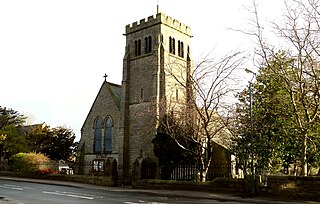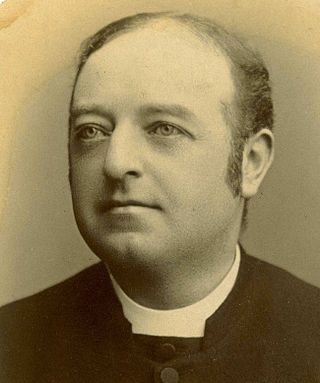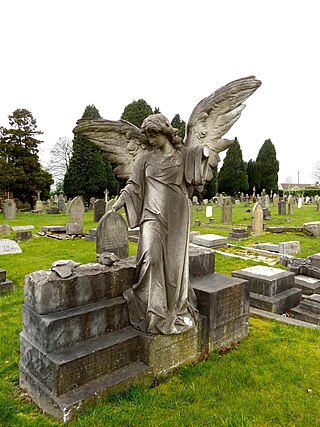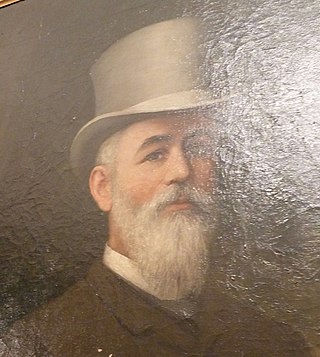
Kirby-on-the-Moor, also called Kirby, is a village in the Kirby Hill civil parish about 1 mile (1.6 km) north of the market town of Boroughbridge, in North Yorkshire, England. It was formerly in the Harrogate district until 2023.

Christ Church, High Harrogate is a parish church in the Church of England located in Harrogate, North Yorkshire, England. It was the first church building to be built in Harrogate and is today home to a thriving congregation and – along with the attached Parish Centre – an important focus of community activities.

All Saints' Church is a 15th-century redundant church in the park of Harewood House, the seat of the Lascelles Earls of Harewood, near the village of Harewood, West Yorkshire, England.

The Church of St Mary the Virgin in Middleton, West Yorkshire, England is an active Anglican parish church in the Armley deanery in the archdeaconry of Leeds and the Diocese of Leeds. The church and its lych gate are Grade II listed buildings.

St James' Church is in the village of Melsonby, North Yorkshire, England. It is an Anglican parish church in the deanery of Richmond, the archdeaconry of Richmond, and the Diocese of Leeds. Its benefice is united with those of four local churches to form the Stanwick Group of Churches. The church is recorded in the National Heritage List for England as a designated Grade II* listed building.

St Mary's Church is in the village of Acton Burnell, Shropshire, England, and stands near the ruins of Acton Burnell Castle. It is an active Anglican parish church in the deanery of Condover, the archdeaconry of Ludlow, and the diocese of Hereford. Its benefice is united with those of St Andrew and St Mary, Condover, St Mark, Frodesley, and St Michael and All Angels, Pitchford. The church is recorded in the National Heritage List for England as a designated Grade I listed building.

St Robert's Church, Pannal, North Yorkshire, England, also known as St Robert of Knaresborough Parish Church, is a Grade II* listed building. A 13th-century wooden church dedicated to St Michael was rebuilt in sandstone in the 14th century by monks of the Trinitarian Order from Knaresborough Priory. It was perhaps then that it was rededicated to Robert of Knaresborough. Its nave was rebuilt in the 18th century, restored in the 19th and remodelled in the 20th. Extensions were added in the 20th century. It is a parish church, and the vicar also serves the Church of St Michael and All Angels, Beckwithshaw.

The Church of St Michael and All Angels, Beckwithshaw, North Yorkshire, England, also known as Beckwithshaw Church, is an Anglican church built and furnished between 1886 and 1887 by William Swinden Barber in the Gothic Revival style as part of the Arts and Crafts movement. The stained glass windows in the same style were added in 1892. The church is listed as a Grade II historic structure; it is a pristine and unchanged example of an Arts and Crafts church retaining all its original furnishings, apart from one missing statue. However, in 2018 the church officers gained planning permission for changes which included removing all of the original pews. The first vicar of this church, from 1887 to 1894, was Charles Farrar Forster.

Charles Farrar Forster was curate of the parish of Lockwood near Huddersfield, vicar of St Andrew's Church in Huddersfield, and the first vicar of the Church of St Michael and All Angels, Beckwithshaw.

The Church of St Thomas the Apostle, Killinghall, is an Anglican parish church in Killinghall, North Yorkshire, England. It was designed in 1879 by William Swinden Barber when the parish of Ripley was split to create the additional parish of Killinghall, and a new building was required to accommodate a growing congregation. It was opened in 1880. Among the early vicars posted in this benefice were two canons, Sydney Robert Elliston and Lindsay Shorland-Ball, and the Venerable Robert Collier, an Irish missionary who served in India and Africa.

Robert Mawer was an architectural sculptor, based in Leeds, West Yorkshire, England. He specialised in the Gothic Revival and Neoclassical styles. He created the Neoclassical keystone heads on St George's Hall, Bradford and on Moorland's House, Leeds, and was working on the keystone heads at Leeds Town Hall when he died. He was a founding member of the Mawer Group of Leeds architectural sculptors, which included his wife, Catherine Mawer, his son Charles Mawer, and his apprentices William Ingle, Matthew Taylor and Benjamin Payler, who all became sculptors with their own careers. Many of the buildings enhanced with sculpture by Robert Mawer are now listed by Historic England.

Catherine Mawer was an architectural sculptor who worked alongside her husband Robert Mawer, then following his death in 1854 she ran the family stone yard as a master sculptor at Great George Street, Leeds, West Yorkshire, England, until 1859. The other master sculptor in her 1854–1859 company, which was known as Mrs Mawer, was her nephew William Ingle who supervised the stone yard and onsite works from 1854. Her apprentices were Matthew Taylor, Benjamin Payler, and her son Charles Mawer. All the apprentices later had independent careers as sculptors. After her son came of age in 1870, she continued working alongside Charles and her nephew William in the partnership Mawer and Ingle at the same address. Catherine was a founder member of the Mawer Group, which comprised all of the above Leeds architectural sculptors. During her lifetime, the Mawer group produced some strongly lifelike and often unflattering portraits, full of movement, including portraits of men with overhanging moustaches and cavernous mouths. These portraits continued after the deaths of Robert Mawer and William Ingle, but stopped appearing at her death in 1877. It is therefore reasonable to conclude that this style of work was her own.

Charles Mawer (1839–1903) was an architectural sculptor, based in Leeds, West Yorkshire, England. He was the son of sculptors Robert and Catherine Mawer and the cousin of William Ingle. He was apprenticed to his father, and worked within the partnership Mawer and Ingle alongside his cousin William and his own mother between 1860 and 1871, and then ran the stone yard himself until he formed a partnership with his fellow-apprentice Benjamin Payler in 1881. Following that date, his whereabouts and death are unknown. His last major work for Mawer and Ingle was Trent Bridge, where he carved alone, following the death of William Ingle. He is noted for his work on the rebuilding of the mediaeval Church of St Michael and All Angels, Barton-le-Street, completed in 1871, where he repaired and recreated damaged and missing Romanesque carvings, and for his carving on William Swinden Barber's 1875 Church of St Matthew, Lightcliffe. Charles' last known work ornaments another Barber church: the 1880 Church of St Thomas the Apostle, Killinghall. Charles was a member of the Mawer Group of Leeds architectural sculptors, which included those mentioned above, plus Matthew Taylor.
Mawer and Ingle was a company of architectural sculptors, based in Leeds, West Yorkshire, England, between 1860 and 1871. It comprised cousins Charles Mawer and William Ingle (1828–1870), and Catherine Mawer (1804–1877) who was mother of Charles and aunt of William. The group produced carvings on many Gothic Revival churches and their internal furnishings. They also worked on civic buildings, warehouses and offices. Many of these are now listed by Historic England, and many of the surviving buildings are within Yorkshire. Their work outside Yorkshire included Trent Bridge.
Benjamin Burstall was a sculptor, architectural sculptor and stone carver, based in Leeds, West Riding of Yorkshire, England.

Harlow Hill Cemetery on Otley Road, Harrogate, North Yorkshire, England, is a local authority cemetery established on land donated by Henry Lascelles, 4th Earl of Harewood in 1869, and consecrated on 3 October 1871 by the Bishop of Ripon. It features the Gothic Revival Church of All Saints, designed by Isaac Thomas Shutt and Alfred Hill Thompson. It has individual memorials to casualties of World Wars I and II, and other graves include those of actor Michael Rennie and Catherine Gurney, an activist in the Temperance movement in the United Kingdom.

Isaac Thomas Shutt was an architect, a farmer, and the proprietor of the Old Swan Hotel, Harrogate, then in the West Riding of Yorkshire, England, from 1849 to 1879. In 1842, at the age of 24 years, he designed the Royal Pump Room, Harrogate, now a Grade II* listed building. In partnership with Alfred Hill Thompson he co-designed the Church of All Saints, Harlow Hill.
Alfred Hill Thompson, ARIBA was an English architect in the Gothic Revival and Arts and Crafts styles, who specialised in small schools and chapels in the Yorkshire area. In partnership with Isaac Thomas Shutt he co-designed the Church of All Saints, Harlow Hill, completed in 1871.

H. E. and A. Bown was an architectural practice in Harrogate, North Riding of Yorkshire, England, in the 19th and early 20th centuries. Its two partners were Henry Edwin Bown who started the business and died at the age of 36, and his brother Arthur Bown, who carried on the business until he retired in 1911.

St John's Church is an Anglican church in Dalton, near Thirsk in North Yorkshire, in England.

























